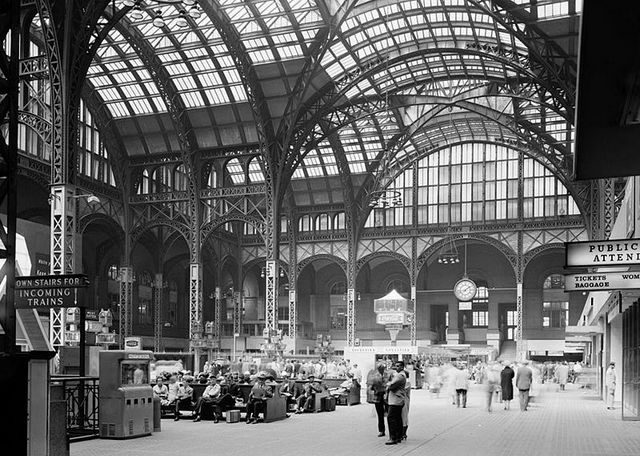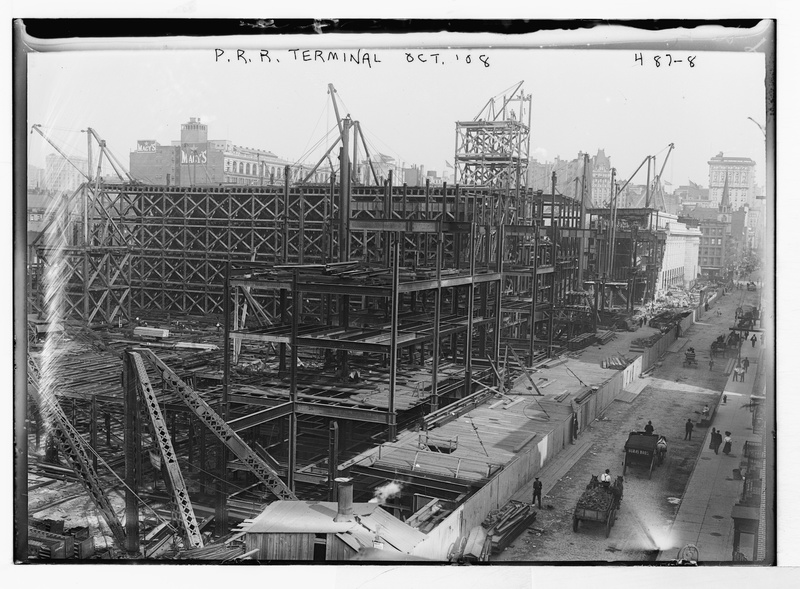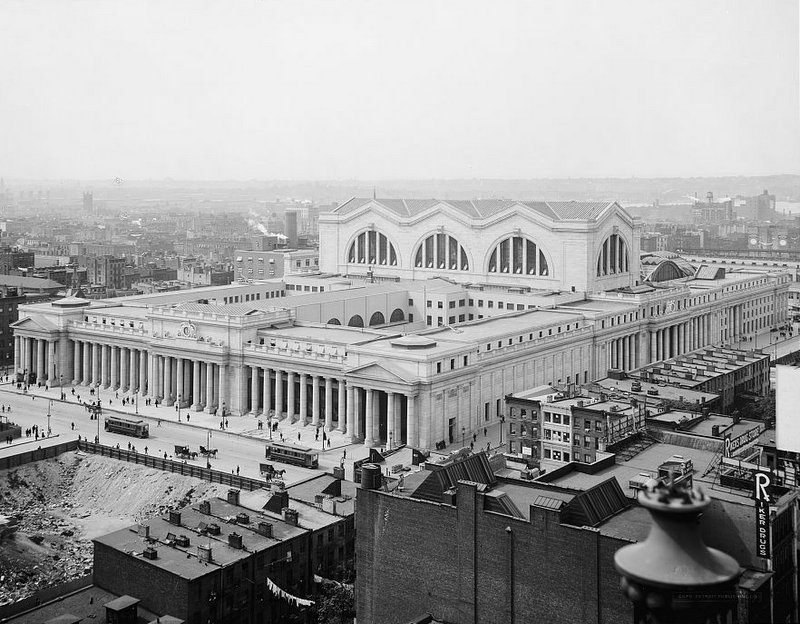
The destruction of the original Penn Station, which began on October 28, 1963, is largely considered one of New York City’s greatest sins. Designed by the illustrious architecture firm of Mckim, Mead, and White, the sprawling structure was a Beaux-Arts masterpiece. Opened in 1910, the building would survive for just over fifty years before being demolished to make way for Madison Square Garden. Over the years, we’ve tracked down remnants of the original station, from the 22 stone eagles that flanked its roofline to architectural remnants inside the current transit hub. As Penn Station undergoes another transition, we’re looking back at the very first iteration. For this list of secrets, we consulted Untapped New York’s Chief Experience Officer Justin Rivers, our resident Penn Station expert and playwright of the previous off-Broadway play The Eternal Space. Here, we dive into his favorite secrets and share some rarely-seen photographs from the show.
Uncover the remnants of the original Penn Station in person by joining Rivers for one of our Remnants of Penn Station walking tours!
1. The Last Building Standing at the Construction Site Was a Pub

The Pennsylvania Railroad had to demolish 500 buildings and displace roughly 6,000 people in order to build Penn Station. The workers were methodical with their demolition plan. The last building they kept standing and operating was a pub so the construction workers had somewhere to drink. The Railroad company did not pay relocation expenses.
Today, as plans are put forth for the redevelopment of the area surrounding Penn Station, buildings in the neighborhood are once again at risk of demolition. Under the current redevelopment plan, first put forth under former governor Andrew Cuomo as the Empire Station Complex Project, several landmarked eligible buildings would be sacrificed to make way for 10 new office towers. That plan has since been given a new name under Governor Hochul, the Pennsylvania Station Area Civic and Land Use Improvement Project. In recent months, support for the plan has waned and developer Vornado has said their work on the project is currently paused. Meanwhile, those who support alternative visions for the future of Penn Station have put forth some intriguing renderings.






